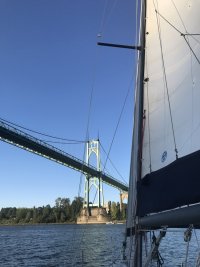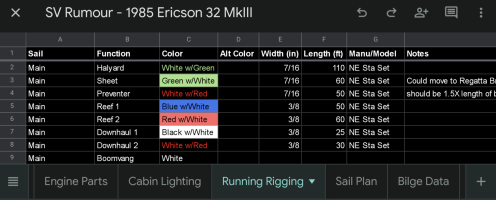but do you recall what length of line you purchased for your reef lines?
Also: is that 1/4” line, and dd you run it back to the cockpit or leave it at the mast?
length will depend on where
your reef-points are
On my 32-III, the first reef point is 4-1/2 feet up the leech off the main, so that reef line needs to be 21 feet (up and back from the boom to the reef cringle, then the length of the boom) PLUS however much length it takes to get from the gooseneck to where you want it.
My second reef point is 9 feet up the leech, so that reef-line needs to be 30 feet PLUS the length to get it from the gooseneck to where you want it.
My reeflines are 45' and 55' long - I wanted them long enough to run along the deck and aft to the self-tailing winch on the cabin-top, with enough tail left over to be useful. They're each ~5 feet longer than they need to be, but I'd always rather have lines too long than not-long-enough.
Oh, and I used 5/16" VPC line - I really like the way it feels, it's very strong and it runs through the blocks (and works in the self-tailer) nicely.
$0.02
ericsonyachts.org



